Get Squirrely: What You May Not Know About NC’s Five Squirrel Species
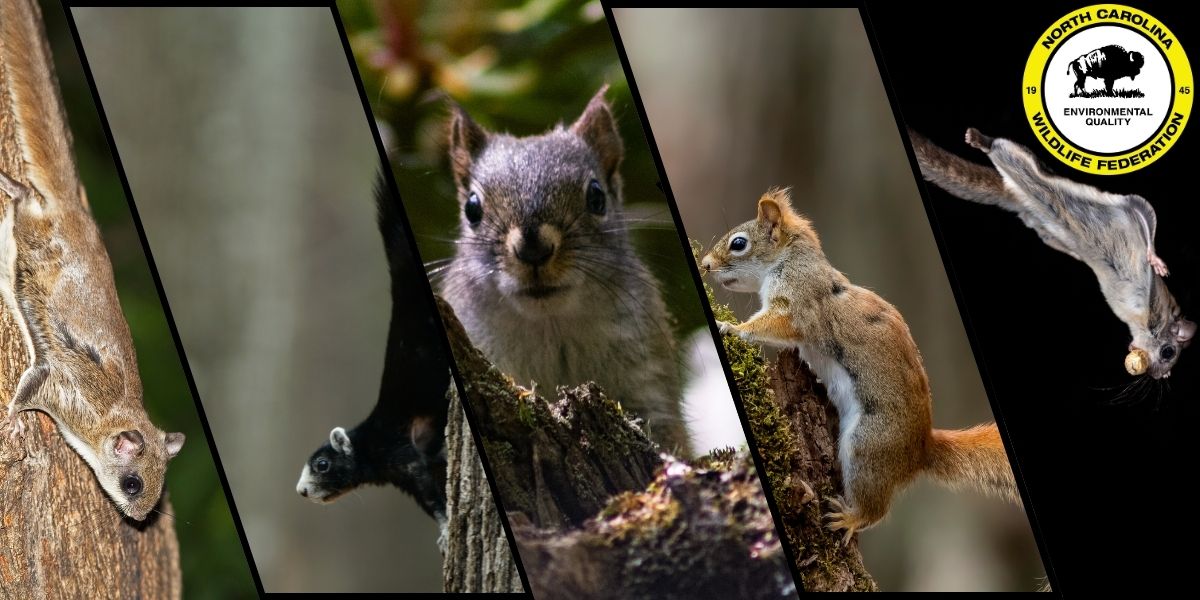
Eastern gray squirrels are a constant presence throughout the state, appearing in suburban yards, town parks, and even in remote backcountry areas. This omnipresence even earned them the spot as state mammal in 1969.
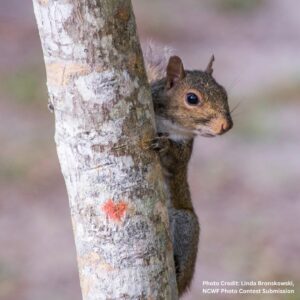
Gray squirrel
Yet, they are also present in less welcoming ways, such as through hogging bird feeders from songbirds, nesting in rain gutters, damaging house electrical wiring, and rummaging through city trash cans for food scraps.
Our relationship with gray squirrels is complex, stemming not from their inherent threat, but from the alterations we’ve made to their habitat and their adeptness at coexisting with humans, making them a familiar sight to all. However, they represent just one type of squirrel species inhabiting our state. The other species often go unnoticed, primarily because they inhabit locations distant from human activity, as is the case with the endangered Carolina northern flying squirrel. But another reason they evade our attention is due to their adeptness at climbing and thriving in the tree canopy above our heads.
This month, NCWF highlights Wildlife in the Overstory. While there is a multitude of wildlife species observable at ground level, many rely on the shelter and resources provided by trees, particularly those thriving in their canopies. These tree canopies can create habitat for wildlife, many of which have evolved and adapted to depend upon them. However, these habitats – and the wildlife within them – face increasing threats from deforestation and habitat fragmentation, much of which results from human development and changes in land use.
In this blog, we talk about the species of squirrels in our state, species that depend upon critical treetop habitat.
Squirrel Overview
Squirrels are prevalent across the Americas, Eurasia, and Africa, and have roots tracing back to the Eocene Epoch, approximately 30-40 million years ago. As rodents, they belong to the same family as rats, mice, muskrats, and beavers.
Five distinct species of squirrels can be found in North Carolina, all in the family Sciuridae. While Eastern gray squirrels (Sciurus carolinensis), red squirrels (Tamiasciurus hudsonicus), and fox squirrels (Sciurus niger) are diurnal, remaining active during daylight hours, both Carolina northern flying squirrels (Glaucomys sabrinus) and southern flying squirrels (Glaucomys volans) have a nocturnal lifestyle – one of the key distinctions between these species.
North Carolina Squirrels
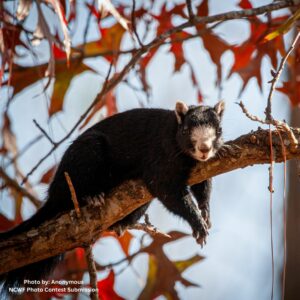
Fox squirrel
The Eastern gray squirrel stands out as the most abundant and widely distributed squirrel species in North Carolina, spanning the entirety of the state. Similarly, fox squirrels have a broad range, primarily across the Piedmont and Coastal regions. Conversely, red squirrels are confined to the higher elevations of the western part of the state, where they have adapted to eat seeds from pines and other conifers.
Carolina northern flying squirrels, listed on the state’s list of Species of Greatest Conservation Need, inhabit the westernmost reaches of the state, while southern flying squirrels have a presence across the entire state, despite rarely being spotted.
In terms of appearance, Eastern gray squirrels typically display a drab gray hue, whereas red squirrels have a rusty red coat, and flying squirrels are often tannish colored. Fox squirrels, however, showcase the widest array of colors, ranging from entirely black, gray, or brown, and sometimes with variations in head and facial colors.
Size discrepancies are another distinguishing factor between species, with fox squirrels ranking as the largest, measuring between 20 to 30 inches long, followed by gray squirrels at 12 inches, northern flying squirrels at 10 inches, and southern flying squirrels and red squirrels just over 8 inches in length.
The small size of flying squirrels aids in their gliding abilities, facilitated by a patagium—a loose membrane of skin and fur connecting their forelimbs and hind limbs—that acts as a parachute. This adaptation allows them to glide distances of several hundred feet, although typical gliding distances are much shorter.
Squirrel Feeding, Nesting, and Social Habits
Gray squirrels, red squirrels, and fox squirrels spend much of the day foraging for hard mast (nuts), berries, mushrooms, tree buds, and occasionally insects. Despite being nocturnal, flying squirrels have similar feeding patterns, which also include a behavior known as “caching”.
Squirrels are renowned for their tendency to gather nuts and bury their stash in the ground. This behavior allows them to stockpile food for later consumption. However, they frequently forget the precise locations of their hidden stores, making them one of the most effective – though unintentional – forest planters.
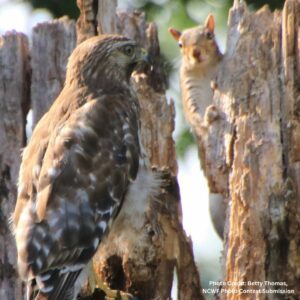
Gray squirrel and hawk staredown
The distinctive barking sound is commonly observed among gray squirrels, but it is a communication method among all squirrel species found in North Carolina. This sharp, wheezing call serves to alert nearby squirrels of potential threats and assert dominance among others. This mode of vocal communication is most used in densely wooded areas where thick vegetation obstructs lines of sight and limits direct communication between individuals. Additionally, teeth chattering and tail flicking serve as means of communication.
Squirrels utilize their tails not only for signaling but also as an important balancing tool while scaling trees and navigating between branches. Flying squirrels use their tails to aid in decelerating at the end of a glide, leveraging wind resistance to prevent collisions with trees.
All of the squirrel species use treetops for various purposes, including evading predators, locating food sources, traveling from place to place, and constructing nests. Nesting occurs within tree cavities or in the crooks of branches, where nests (or “dreys”) are fashioned from leaves and sticks. Across all squirrel species found in North Carolina, females typically have two litters a year, of around 3-4 offspring, occasionally reaching up to 8.
Squirrel Mortality and Status
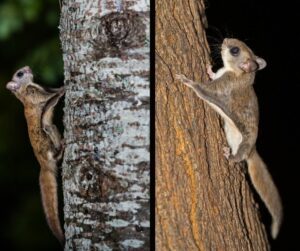
Northern flying squirrel (left) and southern flying squirrel (right)
As common prey animals, squirrels face considerable mortality rates, with only one in four surviving their first year. Beyond this critical “newborn” period, mortality rates decrease to 50% and then 30% subsequently, before rising again in later stages of their lives.
Gray squirrels rank as the most targeted squirrel species for hunting in North Carolina, alongside red and fox squirrels. According to the North Carolina Wildlife Resources Commission, approximately 500,000 squirrels are harvested annually in the state, a significant decline from the over 3,500,000 recorded in 1967.
Despite this reduction in hunting-related mortality, numerous predators prey upon squirrels across all species, including birds of prey, foxes, bobcats, coyotes, snakes, raccoons, and domestic cats and dogs. Roadways are also a source of squirrel mortality, with thousands killed on North Carolina roadways each year, contributing to a national total of 41 million road-killed squirrels a year.
Despite high mortality rates, gray squirrel and fox squirrel populations remain relatively stable, and possibly increasing in some areas of expansion. Southern flying squirrels are more numerous than the endangered northern flying squirrels, though they face similar threats.
Want to learn more about Wildlife in the Overstory?
Written by:

– Bates Whitaker, NCWF Communications & Marketing Manager
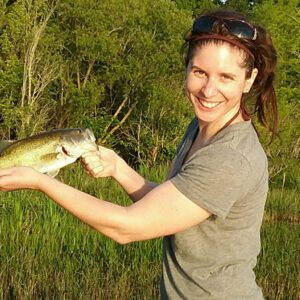
– Dr. Liz Rutledge, NCWF VP of Wildlife Resources

